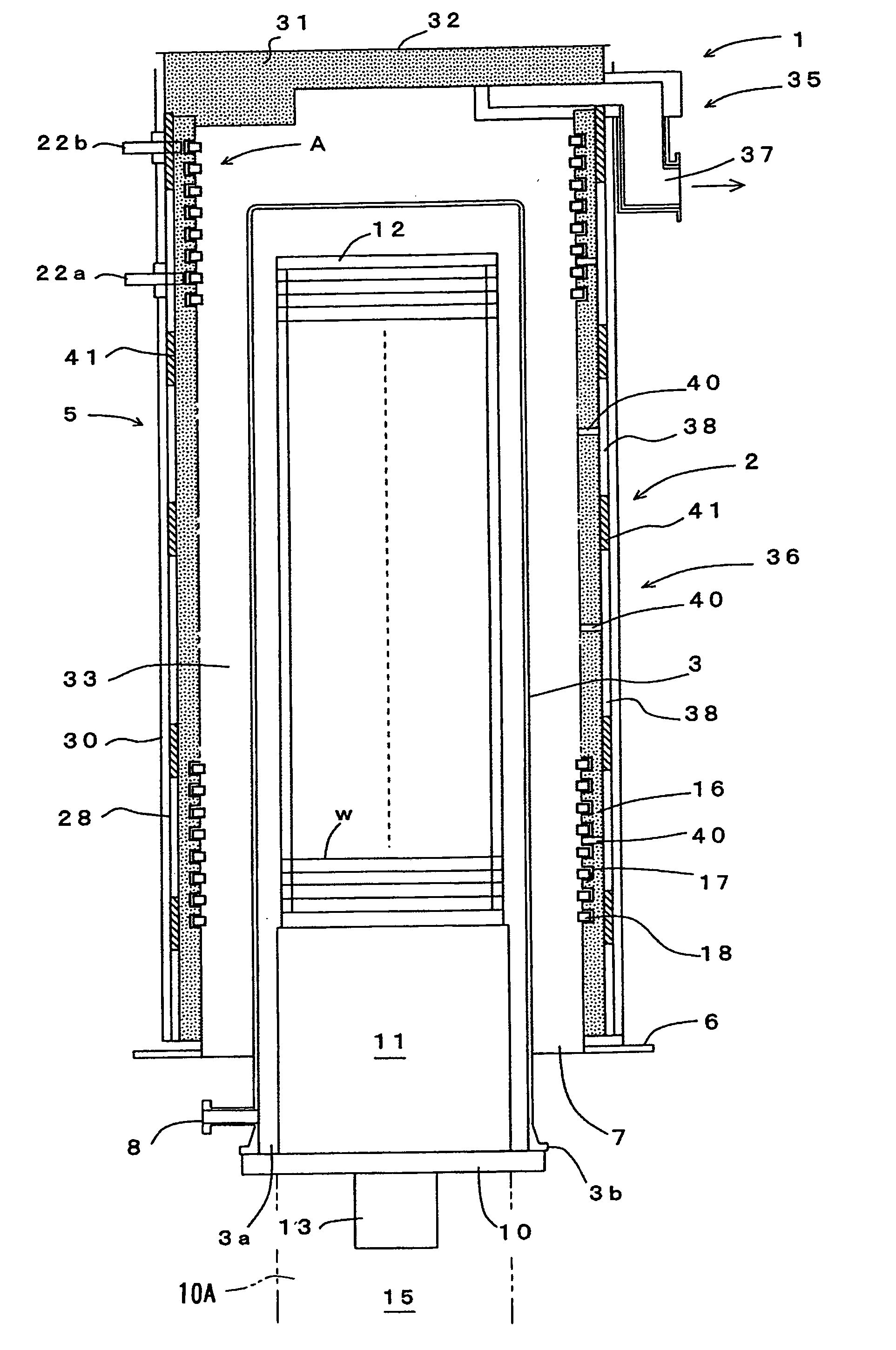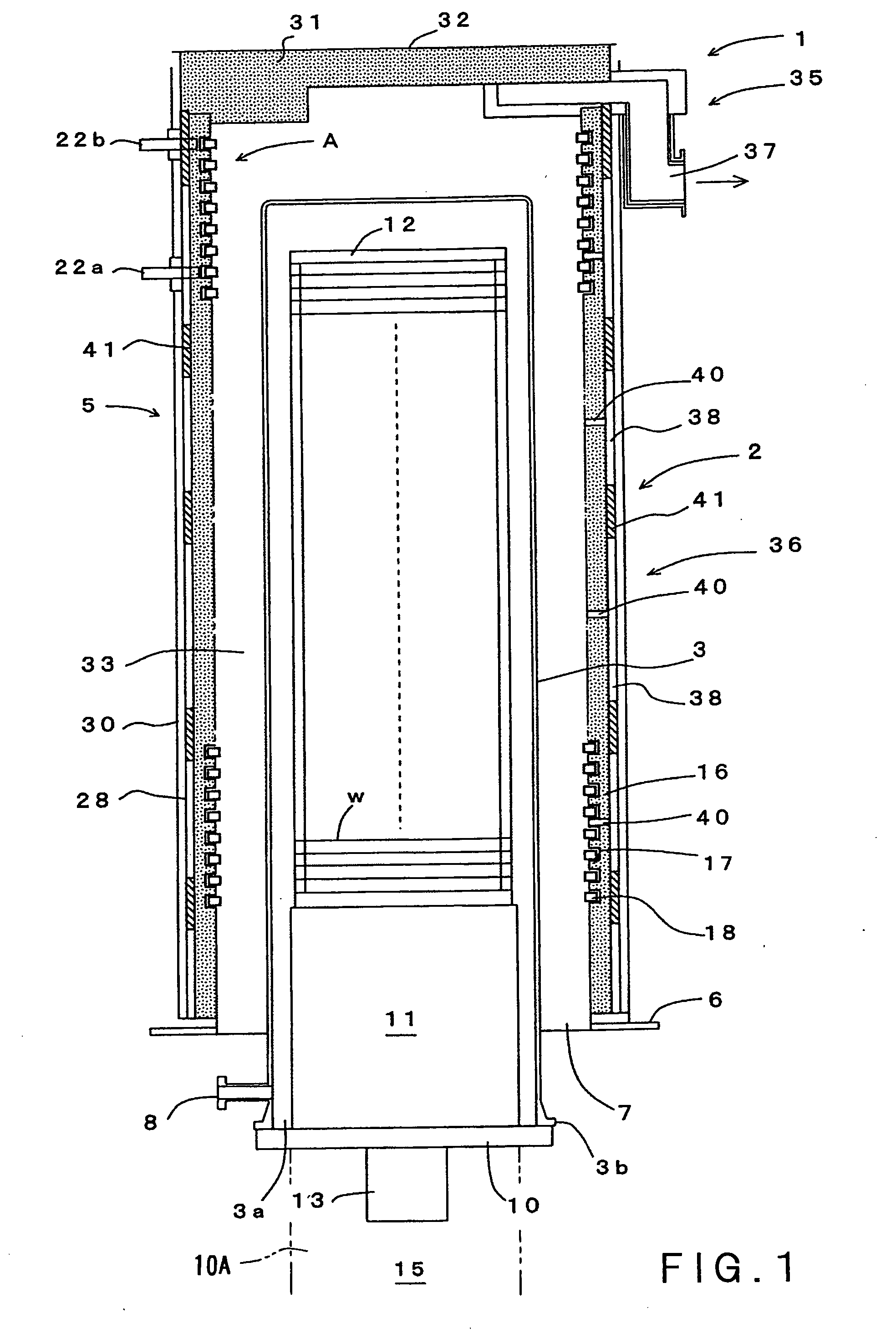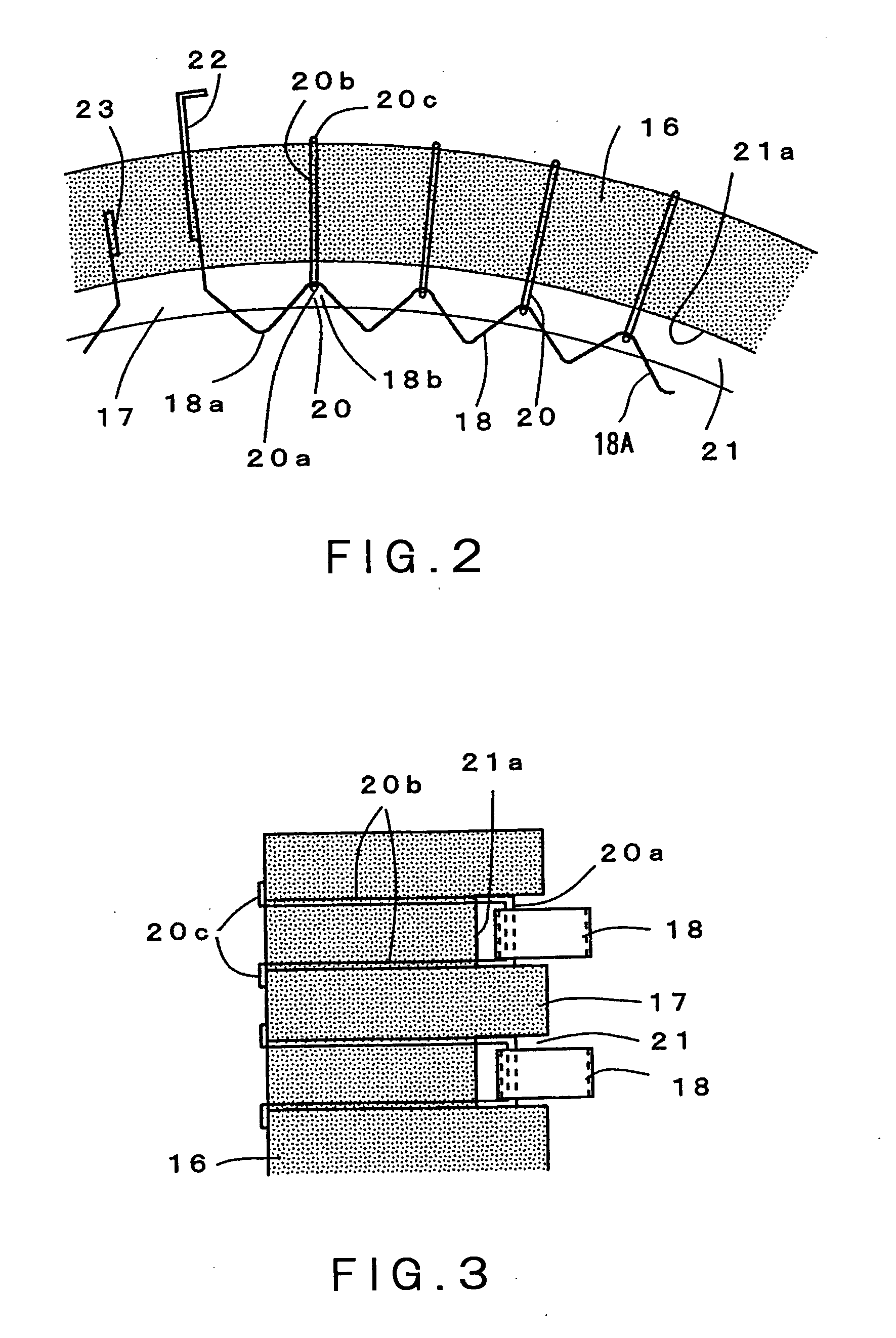Heat processing furnace and vertical-type heat processing apparatus
a heat processing furnace and vertical-type technology, applied in the field of heat processing furnaces and vertical-type heat processing apparatuses, can solve the problems of slow increase in length, heating element likely to be deformed, heating element undergoes creep strain, etc., and achieves rapid increase and decrease of temperature, improve durability, and reduce cost
- Summary
- Abstract
- Description
- Claims
- Application Information
AI Technical Summary
Benefits of technology
Problems solved by technology
Method used
Image
Examples
Embodiment Construction
[0050]The best mode for carrying out the present invention will be described in detail with reference to the attached drawings. FIG. 1 is a longitudinal sectional view schematically showing an embodiment of a vertical-type heat processing apparatus of the present invention. FIG. 2 is an enlarged cross-sectional view of a part A in FIG. 1. FIG. 3 is an enlarged longitudinal view of the part A. FIG. 4 is a plan view of a heating element. FIG. 5 is a side view of the heating element.
[0051]FIG. 1 shows a vertical-type heat processing apparatus 1 which is a kind of a semiconductor manufacturing apparatus. The heat processing apparatus 1 includes a vertical-type heat processing furnace 2 that can simultaneously accommodate a number of objects to be processed such as semiconductor wafers w, and can perform thereto a heat process such as an oxidation process, a diffusion process, and a reduced-pressure CVD process. The heat processing furnace 2 includes: a processing vessel (also referred t...
PUM
 Login to View More
Login to View More Abstract
Description
Claims
Application Information
 Login to View More
Login to View More - R&D
- Intellectual Property
- Life Sciences
- Materials
- Tech Scout
- Unparalleled Data Quality
- Higher Quality Content
- 60% Fewer Hallucinations
Browse by: Latest US Patents, China's latest patents, Technical Efficacy Thesaurus, Application Domain, Technology Topic, Popular Technical Reports.
© 2025 PatSnap. All rights reserved.Legal|Privacy policy|Modern Slavery Act Transparency Statement|Sitemap|About US| Contact US: help@patsnap.com



